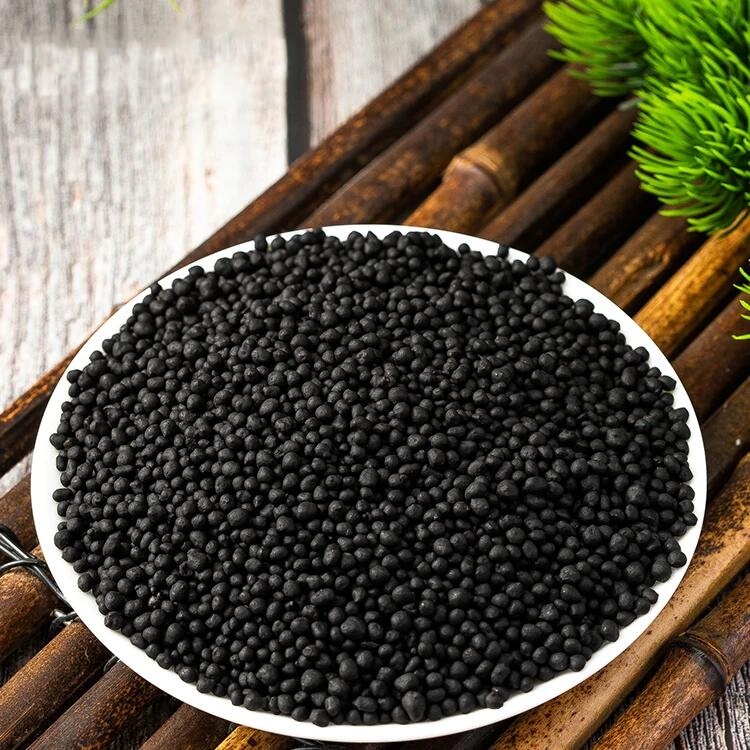Humic acid is the best component of soil organic matter, some customers may have heard this statement. But why is humic acid the best organic matter? Is there any basis for this statement? Today I will answer this question for you.
In fact, this statement is mainly due to the effect of humic acid. The functions of humic acid can be summarized into five categories:
1. Humic acid is a soil improver
With the development of the inorganic fertilizer industry, the habit of heavy inorganic and light organic fertilizers is very common, especially in food crop production. If things go on like this, the soil structure will inevitably be destroyed, resulting in soil hardening and soil fertility declining.
Humic acid can promote the formation of soil aggregate structure, reduce soil bulk density, increase cation substitution, and adjust soil pH, thus helping to improve soil water retention, fertilizer retention, insulation and ventilation capabilities.
In addition, since humic acid is a high-molecular organic matter, when applied to the soil, it can provide sufficient carbon sources and energy for soil microorganisms, promote microbial metabolism and reproduction, thereby increasing the retention of soil microorganisms, enhancing soil microbial activity, and improving the soil microenvironment. This is especially important for improving and enriching the soil.
2. Humic acid is a synergist for fertilizers
Although the application of nitrogen, phosphorus and potassium fertilizers has played a decisive role in increasing the yield of agricultural products, the phenomenon of high yield and low efficiency has become a common and major problem.
Humic acid’s multiple functions of controlling nitrogen and slow release, decomposing phosphorus, preventing potassium leaching, and activating micronutrients are particularly important. It can greatly improve fertilizer efficiency and balance nutrient supply.
3. Humic acid is a good additive for pesticides
Humic acid foliar fertilizer is a good auxiliary for pesticides and is mainly reflected in the following aspects:
(1) Humic acid is composed of complex organic matter. The molecule contains many hydrophilic and lipophilic groups and has the function of surfactant. When mixed with pesticides, it can effectively exert its good dispersion and emulsification effects, thereby Improve pesticide activity and increase pesticide efficacy.
(2) Humic acid has a large specific surface area and has a strong adsorption effect on both organic and inorganic substances. When combined with pesticides, it will form some complexes, thereby slowing the release of the drug’s effect.
(3) Since the functional groups of humic acid molecules contain amino and S-groups, it can reduce the toxic effects of pesticides on humans and animals, thereby improving the safety of pesticides after application to a certain extent.
(4) Highly active fulvic acid has solubilizing and synergistic effects on pesticides, so it can reduce the amount of pesticides used to a certain extent, thereby correspondingly reducing the transfer of pesticides in the food chain and their residues in the environment.
(5) Humic acid also helps to degrade residual pesticides in the soil. Because humic acid promotes the reproduction of microorganisms in the soil, and microorganisms can effectively degrade residual pesticides in the soil, it can effectively reduce the environmental pollution of residual pesticides after application. , reducing the entry of pesticides into the food chain, thereby reducing the accumulation of pesticides in animals and plants.
In addition, humic acid substances themselves have pesticide-like functions. Studies have shown that after spraying humic acid foliar fertilizer, the incidence of pepper bacterial wilt, peanut rust, and fruit rot rates were significantly reduced.
4. Humic acid is the detoxifier of pollutants
The safe production of agricultural products and the environmental quality of agricultural production areas bear the brunt.
Humic acid is rich in active functional groups such as carboxyl and phenolic carboxyl. Its strong adsorption effect on metal ions and organic pollutants is of great significance in mitigating heavy metal and organic pollution.
Humic acid can adsorb polycyclic aromatic hydrocarbons, polychlorinated biphenyls, pesticides, herbicides and other organic pollutants through hydrophobic interaction, coordination exchange and hydrogen bonding. Through fixation and precipitation, it can reduce its active concentration in the environment and alleviate its Pollution to the environment; it can also degrade large molecular organic compounds into small molecular organic compounds through oxidation and reduction.
In addition, after being applied to the soil, it can also improve the self-purification ability of the soil by stimulating the activity of microorganisms and enzymes in the soil, thereby indirectly promoting the degradation of organic matter; or by promoting the growth of plants and changes in the physiological and metabolic functions of the plants themselves, enhancing plant Ability to degrade and purify organic pollutants.
5. Humic acid is a promoter of plant growth
Applying humic acid fertilizer to the soil or spraying humic acid on the leaves can increase the germination rate and vigor of seeds, stimulate the growth of crop roots, increase the activity of metabolic enzymes in plants, enhance the stress resistance of crops, and improve photosynthetic efficiency.
The quality of agricultural products has been significantly improved. The effect of humic acid on plant growth is similar to that of plant hormones. Therefore, for recipient plants, humic acid is also a regulator or promoter of plant growth.
Because humic acid has comprehensive and effective effects on agriculture, it is recognized by the industry as the best component of soil organic matter. If your crops encounter the problems mentioned above, you may wish to try using humic acid products, I believe it will bring more benefits to your crops.



